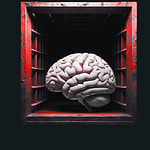No more waiting. No more struggling.
Some of you might remember those late nights filled with chatter, coffee, and collective panic before an exam. Then came the rise of internet chatrooms, message boards, and endless social feeds. If you step into a dorm today, you’ll see fewer and fewer of those scenes.
Instead, you’ll witness students sitting alone in their dorm rooms, whispering into the night: “Which of these—A, B, C, or D—is the right choice?” You can almost hear ChatGPT softly chime back, “C,” watch the student select bubble C, and move on to the next question. All around them, untouched Scantron sheets and neon flashcards lie abandoned.
In the last few years, AI has been reaching quietly but insistently into your kid’s classroom, or creeping silently onto your office desktop, where everyone furtively hides their chat windows from peers, colleagues, and supervisors alike.
Picture this: your daughter conjuring a polished term paper in mere minutes, or your manager having your performance review “self-written” by a bot. But beneath these neat solutions, it isn’t the technology that I will cover today. It is how it changes the ways students learn and network. It is bigger than an individual, and more than data.
Yes, I will start with numbers today to set the stage. However, there is so much more to it in the second section of this article. Together with the latest qualitative research, like displaying live images to you, I will show you how students feel under the name of efficiency.
In the end, I will expand it back to the workspace. I want to bring up two other reports, one by Microsoft and one by Slack, which have already observed a similar impact on the workspace since last year.
We’re all doing it, we all feel the same unease, and we’re drifting further apart from one another as we hide behind our screens.
TL;DR
AI on autopilot: An analysis of 1 million student chat sessions with Anthropic’s Claude AI found students mostly offloading higher-order thinking to the bot (writing code, drafting essays, solving problems) rather than just fact-checking. Nearly half the time, students simply threw a question at Claude and accepted the answer. Great for efficiency; not so great for building understanding.
Peer help is dying: In interviews with 17 college CS students, most admitted they now turn to tools like ChatGPT before asking classmates or TAs for help. Some even redirect their friends’ questions to AI (“Have you tried ChatGPT?”) instead of helping themselves. The result: fewer study sessions, less brainstorming together, and a breakdown of peer support networks.
Mentorship & belonging suffer: With GenAI as the go-to helper, students interact less with professors, tutors, and older peers. This means missing out on the “hidden curriculum” – those unwritten tips and encouragement you get from mentors. Many interviewed students felt more isolated and demotivated as their social learning communities faded. Quick answers are up, sense of belonging is down.
Shall we?
Students and Their AI Friends
Here's another scene of a college student in 2025.
It’s 2 AM, a paper is due tomorrow, and instead of panicked texting a friend or pulling an all-nighter… The student whispers to their laptop late at night, ChatGPT’s reply flickering on the screen, while their textbook remains unopened…
Listen to this episode with a 7-day free trial
Subscribe to 2nd Order Thinkers to listen to this post and get 7 days of free access to the full post archives.












